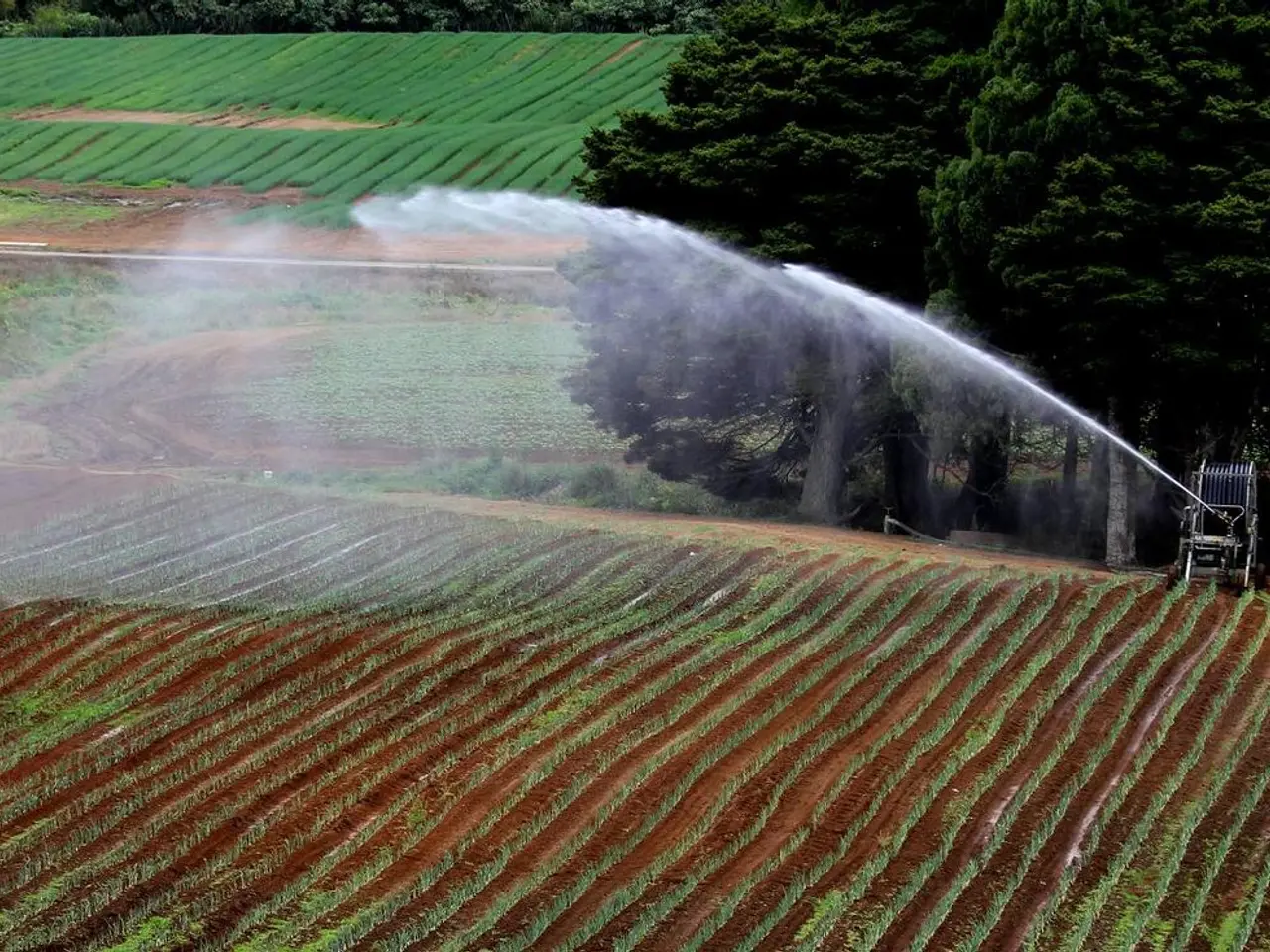Increased cultivation of paddy and maize contributes to an expansion in the overall farmland during the kharif season.
Rajasthan, India's largest state by area, has experienced an abundance of monsoon rains this year, with a total of 448.1 mm, which is 39% above the normal average. This excess rainfall has had a significant impact on the state's crop cultivation, with some crops thriving while others have faced destruction.
The area dedicated to maize cultivation has seen an increase of 11.8%, reaching 92.79 lakh hectares. However, the area for oilseeds has decreased by 3.6%, to 178.64 lakh hectares.
Unfortunately, excessive monsoon rainfall and flooding have caused damage to standing rice crops in eastern states like West Bengal, Odisha, and Assam, resulting in root rot and poor soil drainage issues. This has negatively impacted food security for millions, as these regions are crucial for rice production.
In the northern plains, erratic heavy rainfall and floods have disrupted seedling establishment and grain filling in rice and wheat crops. The reduced winter chill and heatwaves have shortened crop growth and quality periods, further exacerbating the challenges faced by farmers.
Central India, on the other hand, has been hit by prolonged dry spells amid delayed or irregular monsoon rains. This has reduced soil fertility and increased vulnerability to pests and diseases, negatively affecting cotton, pulses, and soybeans.
Despite these challenges, the 2025 monsoon season was above normal, with an early onset, enabling timely sowing in many regions. This has resulted in increased yields and food production overall, helping to reduce inflation and food prices nationally.
However, localised crop failures continue, as seen in Maharashtra’s wheat fields, which have suffered up to 40% loss during heatwaves and floods in prior seasons. Farmers in the region are adopting climate-smart practices and crop diversification, including millets and pulses, to manage water and reduce risks.
In Rajasthan, some crops like moong, bajra, urad, soybean, jowar, groundnut, guar, moth, chola, and sesame have been destroyed due to excessive rains. The acreage for soyabean and groundnut has decreased by 3.8% and 4.5% respectively.
Kharif sowing is nearing completion, with over 95% of the normal area (1,097 lakh hectares) already planted. The acreage for pulses has reached 109.52 lakh hectares, a 1.1% increase from the previous year. The area coverage under the main cereal paddy has also increased by 9.8%.
The sales of fertilizers (urea, DAP, MOP, and complex) during the April-June quarter of the current fiscal year rose 13% to 121.19 lakh tonnes. This suggests positive prospects for a good harvest.
The government is closely monitoring crop losses due to heavy rains, and efforts are being made to mitigate the impacts of the uneven monsoon rains. The wide variation of rainfall distribution among districts within a state this year necessitates a nuanced approach to crop management and disaster response.
Sources:
[1] The Hindu BusinessLine, "Monsoon 2025: India's monsoon rains to be 104-105% of long-period average, with early onset," 9th June 2025.
[2] The Times of India, "Southwest monsoon extends, shifts in timing over recent decades," 12th June 2025.
[3] The Indian Express, "Monsoon rains: India receives 39% excess rainfall this year," 16th August 2025.
[4] The Economic Times, "Climate-smart practices and crop diversification key to managing water risks in India," 23rd August 2025.
[5] Business Standard, "Fertilizer demand indicates positive prospects for a good harvest," 30th August 2025.
Read also:
- Urban Tales: Winged Hedgehogs and Gridiron Mascots Highlight Our Legendary Series on TGC+!
- Amidst India's escalating climate crisis, transgender individuals continue to persevere
- Love, Work, and Friendship Harmonies between Aries Signs
- In New York, a previously vegan restaurant has resumed offering meat in its menu.








